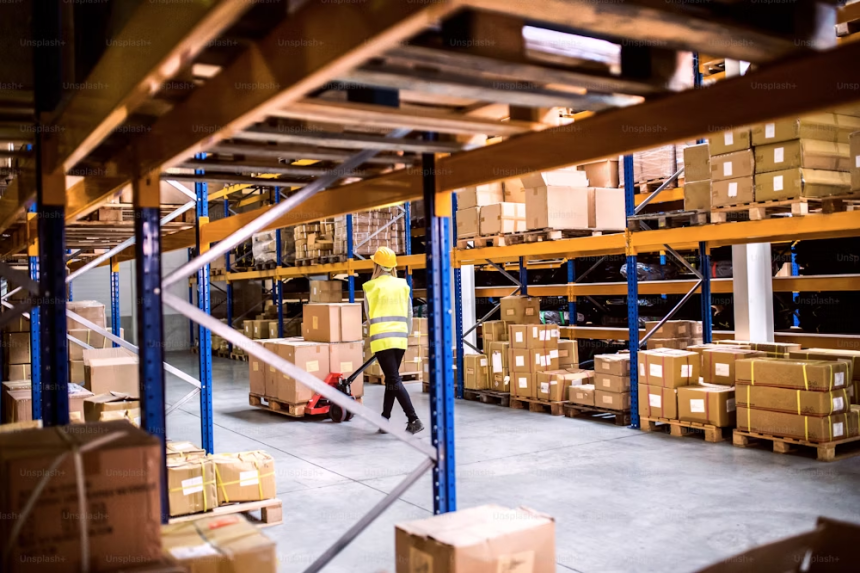Table of Content
Try Vizitor for Free!

Fri, Oct 30, 2020
Read in 7 minutes
We are going forward with the digital era. We reduce our work with this. We installed digital technology, machines and many more in the business for the digital workplace.
But what about our environment?
When we are going digital there we have to save our environment, doing something for the environment and most importantly going green. Going green means making conscious and sustainable choices that help you reduce, rescue, and recycle. So Lets make our organization Eco-friendly.
As we know business leaders are always looking for ways to cut down on unnecessary expenses. Eco-friendly workplaces reduce the expense of the business and they often result in cost savings while demonstrating your responsibility to the environment. With this, budget will be improved that can become even bigger wins when they also improve the company’s brand image and streamline operations.
How can workplaces “go green workplace”?
Companies can go green with the green strategies . So here are some ways to go green in the workplace.
1. Reduce Paper Product Purchases
One of the most straightforward ways to reduce environmental impact in your workplace is to cut down on paper consumption. Traditional paper-based processes waste valuable resources, contribute to deforestation, and create unnecessary waste. By going paperless, you can significantly reduce your company’s environmental footprint. Start by adopting a digital documentation system, where records, forms, and contracts are stored and shared electronically. Cloud-based solutions allow for easy access to documents without the need for physical copies, minimizing the need for printing. Transitioning to a paperless office reduces paper purchases, cuts down on storage costs, and helps keep your workspace organized.
Additionally, switching to digital communication platforms like email and internal messaging systems helps eliminate the need for paper memos and notices. Many businesses have already seen significant cost savings by reducing paper purchases, and this effort supports sustainability goals while increasing operational efficiency.
2. Use Reusable Products
Another key aspect of going green is the promotion of reusable products within the workplace. Single-use items, such as paper cups, plastic bottles, and disposable cutlery, contribute to unnecessary waste and pollution. By shifting to reusable alternatives, your company can reduce its environmental impact and create a more sustainable workplace.
Introduce reusable office supplies, such as insulated coffee cups, water bottles, and shopping bags, to help employees and visitors reduce waste. These items can even be branded with your company’s logo to promote your commitment to sustainability. Reusable products not only reduce waste but also save money in the long run, as they do not need to be replaced frequently.
Encouraging employees to use reusable containers for lunch or snacks can further reduce waste. You can also set up a system for reusable office supplies, such as pens and notebooks, which can be refilled or reused. Offering incentives for those who adopt sustainable practices, like discounts on reusable items, can also help promote the transition to a greener workplace.
3. Transition to a Digital System
Moving from manual to digital systems is one of the most effective ways to go green in the workplace. Paper-based systems not only create unnecessary waste but also require large amounts of physical storage space, leading to inefficiency and higher operating costs. Implementing digital systems for everyday operations reduces paper usage and streamlines tasks.
For example, implementing a Visitor Management System (VMS) like Vizitor helps eliminate the need for paper check-ins and manual records. With digital sign-in systems, visitors can check in using their smartphones, eliminating paperwork and reducing your carbon footprint. Similarly, digital systems for employee attendance, leave requests, and performance tracking help reduce reliance on paper forms and improve efficiency.
By transitioning to a fully digital workplace, businesses can also enhance security and accessibility. Cloud-based systems provide real-time access to important documents and data, making collaboration more efficient and reducing the chances of data loss.
4. Bring Greenery Inside
Adding plants to your office is an easy and effective way to go green and improve the workplace environment. Indoor plants not only improve air quality by absorbing carbon dioxide and harmful chemicals like benzene and formaldehyde, but they also provide aesthetic benefits.
Plants help reduce stress, increase creativity, and improve overall productivity. Research has shown that green spaces can lower anxiety levels, boost employee morale, and promote a sense of well-being. Additionally, plants can help absorb noise, making workspaces quieter and more comfortable for employees.
Consider placing plants in common areas, such as the lobby, kitchen, or break rooms, as well as on individual desks. Choose low-maintenance plants, such as succulents, peace lilies, or snake plants, that thrive in indoor environments with minimal care. Bringing nature indoors can make a significant difference in creating a positive and healthy work environment.
5. Conduct Energy Audits
Conducting an energy audit is an essential step in identifying areas of energy waste and improving efficiency in the workplace. By examining your office’s energy consumption, you can pinpoint where changes can be made to reduce energy use and lower costs.
Start by reviewing the office’s lighting, heating, ventilation, and air conditioning systems. Implement energy-efficient lighting, such as LED bulbs, which consume less power and have a longer lifespan. Encourage employees to turn off lights, computers, and other devices when they are not in use.
Consider installing programmable thermostats to optimize heating and cooling systems. Set the thermostat to reduce energy consumption during off-hours, and make sure the office is properly insulated to avoid energy loss.
You can also invest in energy-efficient appliances and equipment, such as Energy Star-rated computers, printers, and kitchen appliances. By conducting regular energy audits and implementing energy-saving practices, your business can significantly reduce its carbon footprint and operating expenses.
6. Implement Sustainable Transportation Options
Encouraging employees to use sustainable modes of transportation can also help reduce your company’s environmental impact. Transportation is a significant contributor to greenhouse gas emissions, and by offering green transportation options, businesses can help reduce their carbon footprint.
Consider providing incentives for employees who use public transportation, carpool, or bike to work. Offer subsidized transit passes, secure bike racks, or electric vehicle charging stations to encourage the use of eco-friendly transportation options. You can also implement a telecommuting policy to reduce commuting altogether and allow employees to work remotely on certain days.
Sustainable transportation options not only help reduce carbon emissions but also promote employee wellness. Active transportation, like walking or biking, can improve physical health and contribute to a more sustainable workplace.
7. Adopt Green Office Practices
Creating a green office culture involves adopting sustainable office practices that contribute to waste reduction and resource conservation. This includes practices such as reducing energy consumption, minimizing waste, and encouraging recycling.
Start by setting up recycling stations throughout the office for paper, plastic, and glass. Provide employees with clear guidelines on what can be recycled and ensure that recycling bins are easily accessible. You can also implement a composting program for organic waste, such as food scraps, to further reduce landfill waste.
Encourage employees to print only when necessary and use double-sided printing to reduce paper waste. Additionally, adopt digital collaboration tools to reduce the need for printed materials, such as meeting notes or presentations.
By promoting a green office culture, you not only help the environment but also engage employees in sustainability efforts, creating a sense of shared responsibility.
8. Promote Waste Reduction and Recycling
Effective waste management is a key part of going green in the workplace. Reducing waste, reusing materials, and recycling are essential strategies to minimize the environmental impact of your business operations.
To reduce waste, start by reviewing your office’s consumption patterns and identifying areas where you can cut back. This could include reducing packaging waste, eliminating single-use items, and opting for bulk purchasing. Encourage employees to bring their own reusable containers and cups to reduce disposable waste.
Promote a culture of recycling by providing clear instructions and incentives for employees to recycle paper, plastic, and other materials. Regularly remind employees of the importance of waste reduction and recycling, and make it easy for them to participate.
Conclusion: The Long-Term Benefits of Going Green
Adopting green practices in the workplace not only helps reduce your company’s environmental impact but also provides numerous benefits, including cost savings, improved productivity, and enhanced brand reputation. Going green is not a one-time effort; it’s an ongoing commitment that can create a positive and lasting impact on both the environment and your business.
By implementing strategies such as reducing paper usage, using reusable products, transitioning to digital systems, and promoting sustainable transportation, businesses can improve operational efficiency while contributing to a sustainable future. In the long run, going green in the workplace leads to a healthier environment, a more engaged workforce, and a stronger brand that resonates with customers and clients.
By taking small, consistent steps toward sustainability, your business can help protect the planet while










